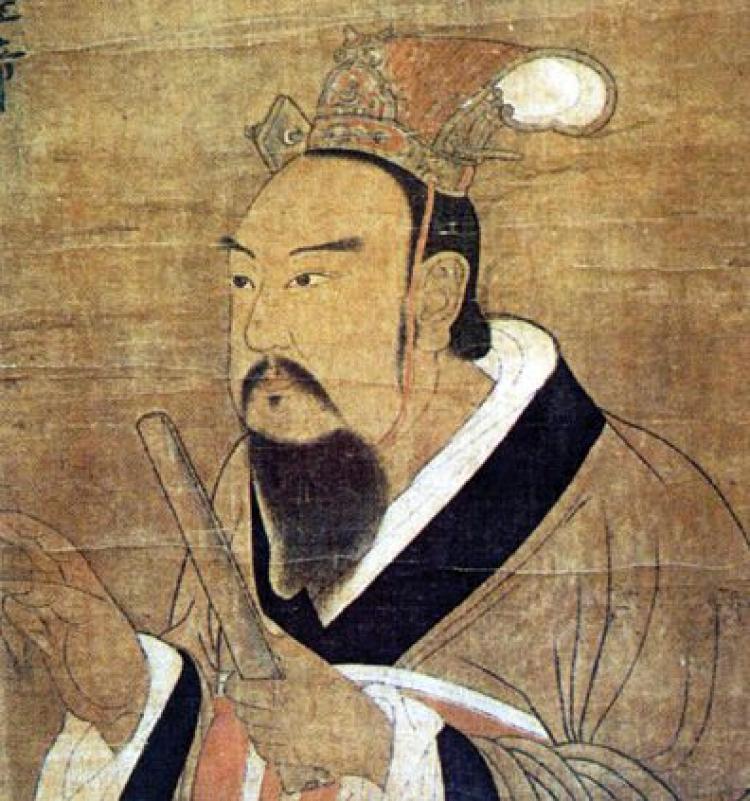In the 6th century, Japan was torn between warring factions, each struggling to unify the country under its rule. A great chieftain, Soga no Iname, ultimately led the Soga clan to become the most powerful of the many warring families in that era, and unified Japan under the figureheads he placed in power.

Seeking an advantage over his rival Monotobe and Nakatomi clans, Soga no Iname introduced a new state ideology, a fusion of Confucianism and the new religion of Buddhism, into the Japanese political and social landscape. This led eventually to the installation of Prince Shotoku as Japan’s ruler, who in turn promulgated the famous “constitution” of Japan, a skilled blend of Confucian and Buddhist feudal ideology that placed emphasis on social harmony in the form of obedience by all members of society to their sovereign.
The Soga, a clan with deep connections in Korea, were aware that the Baekje and Goguryeo kingdoms in that country were incorporating Emperor Wu’s Confucian/Buddhist ideology into their systems of rule. It was then that Soga no Iname decided to do the same, advancing this new political system to subject his people.
This social model, designed to gain and hold power, did not gain hearts and minds by simply appealing to people’s good nature. The Soga introduced statues of the Buddha to replace Shinto gods in the country’s shrines.
Historians designate the year 538 as the year that the Soga clan sent emissaries to the Liang Dynasty Court of Emperor Wu to obtain Buddhist sutras and artifacts to carry back to Japan. But an earlier transmission occurred that did not go through official channels. In the year 522 a famous Buddhist sculptor named Sima Dadeng left Nanjing, where he served as a sculptor in Emperor Wu’s new monasteries, and carried his craft and Buddhist message to Japan. He settled near modern Nara, where he soon caught the attention of Soga no Iname. It appears that Sima Dadeng, aside from sculpting magnificent Buddhist statues for his own (religious) and the Soga’s (political) purpose, was tasked with making ornaments for the Soga’s warhorses. In any case, despite fierce resistance by rival clans to the new religion, the Soga and their new political ideology won the day
In a peculiar irony of history, Zen’s founder Bodhidharma rejected Emperor Wu’s political ideology in the famous first case of the Blue Cliff Record. That same ideology was transmitted to Japan through Sima Dadeng, and came to symbolize, through image and language, the unification of Japan under imperial rule.
—Andy Ferguson
This post is part of author and scholar Andy Ferguson’s new “Consider the Source” series. As an old Chinese saying goes, “When drinking water, consider the source.” In the coming weeks, Ferguson will ask and answer seemingly simple (but in the end, profound) questions about the “source” of East Asian Buddhism, weaving a tale of both spiritual inspiration and political intrigue.
This fall, Tricycle will be traveling to the source itself, China, in a special pilgrimage led by Ferguson and abbot of the Village Zendo Roshi Pat Enkyo O’Hara. Want to come with us? Click here for more information.
Ferguson is the author of Zen’s Chinese Heritage: The Masters and their Teachings, which is used widely by Western Zen teachers, and Tracking Bodhidharma, which offers a wealth of new information about the founder of Chinese Zen Buddhism.
Thank you for subscribing to Tricycle! As a nonprofit, we depend on readers like you to keep Buddhist teachings and practices widely available.